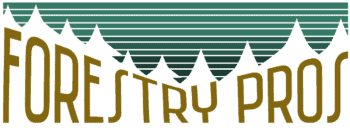- Lumber Guide: Sycamore Wood Uses - December 8, 2023
- Stihl MS291 Review and Buying Guide - December 7, 2023
- Mulberry Wood Uses: It’s Not Just for Silk Worms! - October 25, 2022
This article focuses on fascinating Virginia Pinewood and its uses. In this guide to Virginia Pine Wood uses, we’ll be providing you insights about the detailed descriptions of the Virginia Pine tree and its wood, where you can find these trees, and how you can use the Virginia Pinewood.
Moreover, this article will guide you towards identifying Virginia Pine and will provide you with all the woodworking characteristics of this species.
Make sure to watch out for the things you need to know before choosing them for your next project and the frequently asked questions at the end.
To begin with, let’s dive into the basics of Virginia Pine trees.
Virginia Pine Trees
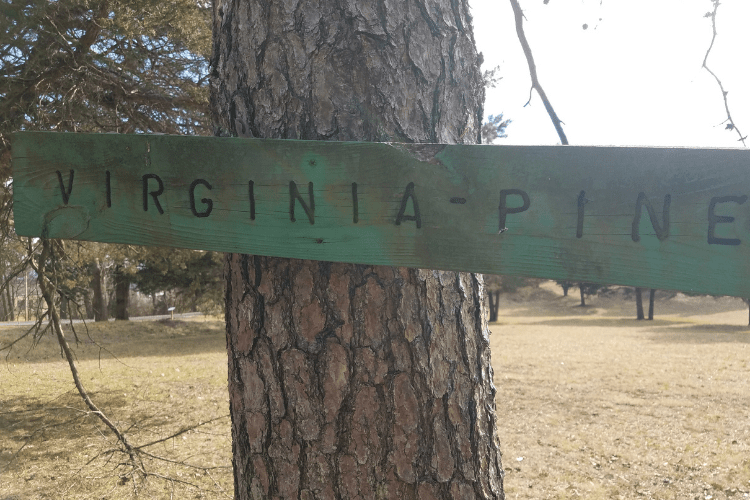
The Virginia pine is a common sight in North America, with unruly growth and rugged character. It is not considered a landscape tree but is an excellent specimen for naturalizing large spaces, reforesting as a barrier, and providing habitat and food for animals and birds.
Virginia Pine, which is also known by the names Scrub Pine, Spruce Pine, and Jersey Pine, is a medium-sized, classic evergreen gymnosperm tree. It belongs to the Pinaceae family. It is commonly found in old fields at high elevations of Piedmont and mountain regions.
It’s a broad, open pyramid when young, becoming flat-topped and horizontal with age with no prominent central leader.
Moreover, it prefers sites with full sun, well-drained loam, or clay with a soil ph of less than 5, but will also grow on very poor, sandy soil, where it remains small and stunted.
Following its life history, pollination usually occurs by wind during mid-march to late May, depending on local temperature. The typical life span of this tree is around 65 to 90 years.
Identification of Virginia Pine Trees
Pinus Virginia is endemic to the USA. Here are the key characteristics to look out for finding the tree in the wild as woodworking and forestry can be tough if you can’t correctly identify trees and their wood.
Tree Size and Shape
The usual tree size ranges from 9 to 18m (18-59 feet) but can grow larger in optimum conditions. The tree trunk can be as large as 20 inches in diameter.
In addition, trees are straight to contorted with usually a single round trunk and irregular crown of long spreading flexible branches with slender, reddish to purplish, often glaucous branchlets. Branchlets, in addition, bear-appressed scale leaves with axillary fascicles of needles.
Virginia Pines have a high value when used as Christmas trees.
Bark: The tree has shaggy bark of dark brown, orange-brown, or dark grey color. Young trees have orange-brown scaly bark, whereas thin small scaly plates develop with maturity.
Leaves
The Pinus Virginia have short twisted needles that come in bunches of two per fascicle, typically two to eight centimeters in length. The needles are pale yellow to green in color, with inconspicuous stomatal lines all over the surface, narrowly acute apex, and serrulate margins.
They remain on the tree for 3 to 4 years. Moreover, the leaf sheath is greater than 2.5 mm long, and there is hair on the bracts and the bud scales.
Flower and Fruit
Pinus Virginia is monoecious, with flowers blooming in the spring. Male flowers are orange-brown, whereas female flowers are pale green. Moreover, Pollen cones are ellipsoid-cylindrical, 10-20 mm in length.
Similarly, fruits are found in the form of cones. Seed cones mature in 2 years and are borne throughout the tree’s crown and persisting up to five years. They are 3-7 cm in length, dull red-brown, nearly sessile, or on stalks to 1cm, with rigid scales.
Woodworking Characteristics
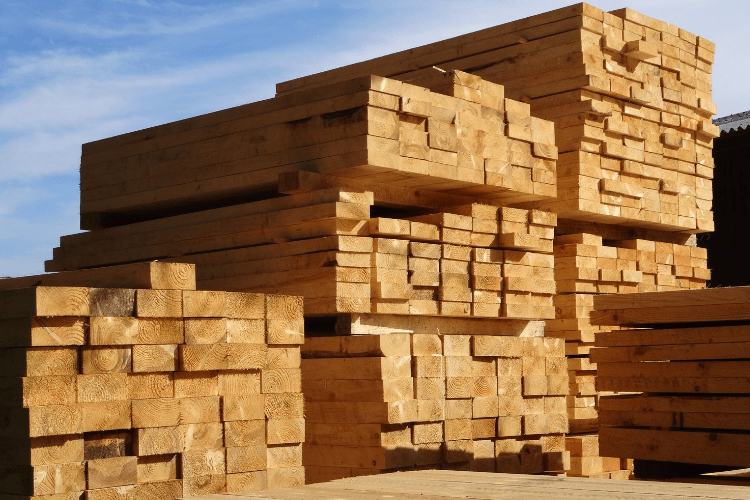
Pinus Virginia is not often used for lumber, unlike other pine species, because of its knotty wood and tendency to warp with moisture.
However, it is used as a source of wood pulp because of its long fibers. Making it useful for papermaking and other types of lumber. Historically, Pinus Virginia was used as mine timbers for railroad ties and fuel and tar.
The basic woodworking characteristics and properties of the wood are listed below:
- Average Dried Weight: The average dried weight of the wood is 32 lbs/ft3 (515 kg/m3).
- Specific Gravity: At 12% moisture content, the specific gravity of the wood is 0.51, whereas basic is 0.45
- Modulus of Rupture: The Modulus of Rupture for the wood is 89.7 MPa.
- Elastic Modulus: The Elastic modulus of the wood is 10.48 MPa.
- Crushing Strength: The crushing strength of the Pinus wood is 46.3 MPa.
- Shrinkage: The radial shrinkage of the wood is 4.2%, the Tangential shrinkage is 7.2%, and volumetric shrinkage is 11.9%. As Pinus wood has resistance towards shrinkage and swelling, it is dimensionally stable, and wooden logs would not expand in the moist environment and would not contract in a dry environment.
- Color/Appearance: The heartwood of Pinus Virginia tends to be reddish-brown, whereas wide sapwood has a paler yellowish-white color. This beautiful contrast of the heartwood and sapwood together can create a rustic appearance.
- Grain/Texture: Pinus Virginia wood grain is generally straight with a medium texture. Pinus wood has unique grains with knots darker than the color of the wood. Pinus wood is compatible with rustic and traditional interior design styles with its unique grains and light color.
- Endgrain: Large resin canals are numerous and evenly distributed, mostly solitary. The color contrast is relatively high with an abrupt transition of earlywood and latewood.
- Rot Resistance: Unfortunately, the heartwood of Pinus Virginia is rated as moderate to low in decay resistance but can be treated with chemicals to make it more resistant.
- Workability: Virginia pine works fairly well with hand-carved and machine tools. It glues and finishes well, although the resin can gum up the tools and clog sandpaper. Due to its soft surface, Pinus wood takes nails and screws very well and can be craved easily to produce artifacts or to give artistic features to the furniture.
- Odor: The Pinus wood has a distinct smell, shared among most Pinus species.
- Allergies/Toxicity: Be careful while handling any wood dust as working with pine has been reported to cause allergic skin reactions, runny nose, and asthma-like symptoms in some people.
Pricing/Availability
The Pinus wood is sold and mixed interchangeably with Southern Yellow Pine and other species and is available as construction lumber. In fact, the mechanical and woodworking properties of Virginia Pine are also comparable to that of Southern Yellow Pine.
Pinus Virginia is not an expensive wood and one should expect prices to be in low to mid-range as it is widely available and grows rapidly.
Uses of the Virginia Pine Wood
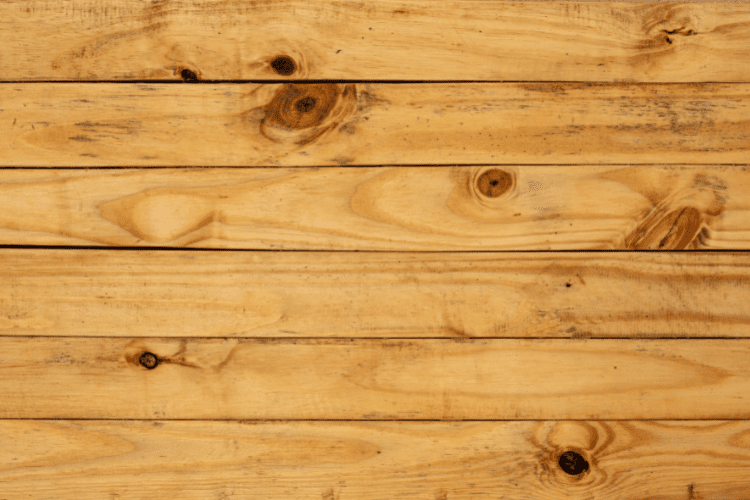
In the past, Virginia pine was used only for mine purposes, railroad ties, rough lumber, fuel, tar, crossties, fencing, and charcoal. It has little importance for lumber in the current scenario but is becoming more important as a pulpwood species.
The wood of Virginia Pine is commonly used to make wood pulp and paper.
Pinewood is less durable than hardwood species, but it absorbs finishes such as paints, varnish, preservatives, and oils.
It is perfect for home working projects and can be an excellent timber choice for DIY projects because it is economical and easy to work with due to its lightweight. In fact, due to their superior absorption characteristics, treated pine is very durable and is resistant to termites, bacteria, fungal attacks, and moisture.
Pinus Virginia wood can also be used for cladding, decking, flooring, beams, paneling, structural framing, cabinets, and many more.
You can Virginia Pine flooring frequently on older houses in areas where it is found in abundance. Boards are also constructed from Virginia Pinewood obtained from large enough trees with minimal decay and damage.
Working with Virginia Pine Wood
Virginia Pine is not commercially made into boards and lumbers. However, if you get your hands on logs of Virginia Pine, you will want to make good use of this good-looking wood despite its mechanical properties.
To do so, the first thing you need to do is to look for any structural defects like decays, knots, and the overall size of the logs.
This is because Virginia pine is not frequently found in sawlog sizes. As the trees grow older, they are often infested by fungal decay.
Also, you will notice a much tighter growth ring pattern on the cross-section of the log. Since Virginia pine is found to be twisted and crooked, you need to make sure that your log is straight enough to produce boards and lumbers.
After this, you can now saw the logs into appropriate shapes and sizes. For a defect-free Virginia Pine tree, you can make 2*6 for structural uses or 1*8*10 foot boards.
Now, for the actual sawing part, you need to choose your blade depending upon the condition of your Virginia Pine. If you are sawing dried Virginia Pine wood, it is best to use a 70 blade. However, if you are sawing Virginia Pine in green condition, a 100 blade is recommended.
Finally, Virginia Pine can cause pitch buildup in the saw while working. In such cases, make sure to use lubricant for a smoother workflow. Water and soap or detergent are widely used as an effective lubricant while working with Virginia Pine. Many woodworkers also use diesel spray to reduce and remove pitch buildup.
Seasoning of Virginia Pine Wood
Virginia Pine quickly case-hardens. So seasoning of Virginia Pine is quite tricky and necessary. Case hardening is the condition during timber drying where the outer layer of timber dries rapidly and shrinks more than the inner shell. This results in the development of stress between the inner and outer layers.
Since Virginia Pine dries much faster, the sawn timber shouldn’t be left on the open for too long. They should be transported to the stacking area as soon as possible and stacked properly.
This is even more necessary because Virginia Pine lumber is susceptible to decay through bugs and molds. Even while seasoning, Virginia pine shouldn’t be laid on the ground and should be elevated and covered.
Things to be Considered
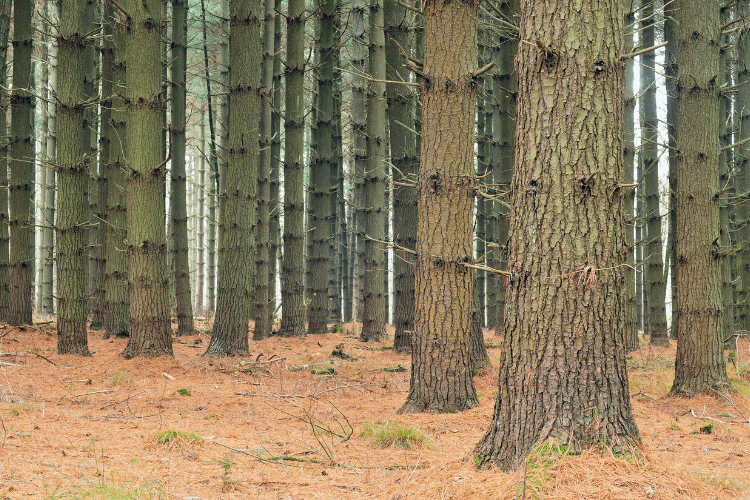
Despite the fact of Pinus being a popular softwood used for many purposes with several advantages, There are some of the points to be considered before buying the wood:
- Not compatible with modern styles: Nowadays, modern contemporary interior style is mostly preferred, but Pinus Virginia doesn’t fit in. It can be made compatible by painting pinus wood furnishing but is less preferred to other species.
- Has to be treated: Pinus wood has to be treated with chemicals to make it rot and termite resistant, increasing its cost.
- Less resistance to water: Despite having good stiffness, Pinus Virginia wood has less resistance to water, due to which it can be bent and scratched easily.
- High maintenance: Pinus wood has to be refurbished to maintain its original look as it tends to get scratched.
- Excessive knots: Excessive knots in the wood make the furniture weaker and hence must be carefully examined before any furniture making.
- The top grades Pinus wood are free of knots and blemishes and have a uniform color which makes it the most expensive one, but it’s the one you should choose for cabinetry.
- For paneling and utility construction, use common-grade Pinus wood with slight blemishes.
(FAQs) Frequently Asked Questions
Question: Is Pinus Virginia is a Hardwood?
Answer: Pinus is not a hardwood; it comes from a coniferous tree. It has needles, leaves, and cone fruits.
Question: Can I Use Virginia Pinewood for Making Furniture?
Answer: In the current scenario, it has little importance for lumber, as Virginia pine has weak wood and is susceptible to breakage, but is becoming more important as a pulpwood species.
Question: Do I Need Powerful Tools for Working with Virginia Pinus Wood?
Answer: As mentioned earlier, Virginia pine is softwood. It works fairly well with hand-carved and machine tools. It glues and finishes well, although the resin can gum up the tools and clog sandpaper. Due to its soft surface, Pinus wood takes nails and screws very well.
Question: Do I Have to Worry About Any Allergies While Working with Pinus Virginia Wood?
Answer: Wood dust is known to cause irritants, skin problems, and asthma-like breathing problems. Therefore be careful with the sawdust, as any sawdust can cause serious respiratory irritations.
Question: Where Can I Buy Pinus Virginia Wood?
Answer: You probably can find the wood in every lumberyard in North America. This fact is because the tree is widely available and grows rapidly in the forest of those regions.
Conclusion
Although Pinus Virginia is a softwood, it is widely used as a structural wood for wooden framed houses, solid wood flooring, and also in engineered wood flooring.
Pinus wood also finds its application in making doors, windows, decks, molds, etc. In addition, paper is usually made from pulpwood and wood veneers, and plywood is also made up of Pinus species.
Although it is not as durable as a hardwood species, it is a good compromise for budget cautious consumers due to its durability compared to the price.
While it is not the best lumber, you can get, proper maintenance and the ability to stain Pinus wood to get the desired color have made it more attractive and can last longer. Therefore Virginia Pine can be a good choice for light construction.
